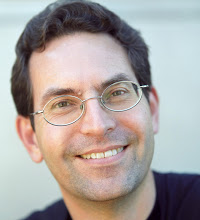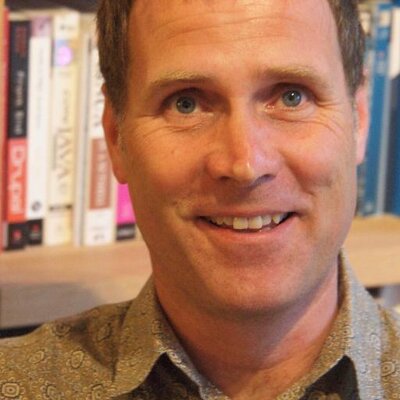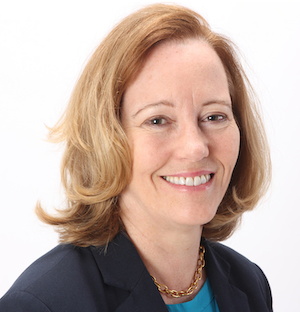 Since 2016 is the 20th year I’ve served as CIO, I’ve given a great deal of thought to the various careers I’ve had and the roadmap for the 20 next years of my working life. In my late teens and 20s I was an entreprenuer running a 35 person software company while doing my medical and graduate school training. I was also a winemaker, home builder and engineer. In my early 30’s I was an Emergency physician, software coder, and data analyst. In my mid 30’s as a CIO, I focused on architecture, high reliability computing, and centralization of IT service delivery. In my early 40’s, I focused on disaster recovery, interoperability, and educational technologies..
Since 2016 is the 20th year I’ve served as CIO, I’ve given a great deal of thought to the various careers I’ve had and the roadmap for the 20 next years of my working life. In my late teens and 20s I was an entreprenuer running a 35 person software company while doing my medical and graduate school training. I was also a winemaker, home builder and engineer. In my early 30’s I was an Emergency physician, software coder, and data analyst. In my mid 30’s as a CIO, I focused on architecture, high reliability computing, and centralization of IT service delivery. In my early 40’s, I focused on disaster recovery, interoperability, and educational technologies..
interoperability
See the following -
The Challenges For Medical Device Interoperability
Hospitals have complicated and connected technology ecosystems. Few places have such a diverse array of machines, skills and information, all attempting to coexist in a stressful decision making environment. Each department has an array of devices and a staff with highly specialised skills. Read More »
- Login to post comments
The Cure Project Aims To Give Providers A Place At The HIT Table
Anyone wondering where the #EHRbacklash hashtag might be headed may have found some clarity at HIMSS13. The man behind the Twitter hashtag, Mosaica Partners vice president Bob Brown, along with Steven Waldren, MD, senior strategist for the American Academy of Family Physician's Center for Health IT, are spreading word about The Cure Project. Read More »
- Login to post comments
The Curious Case Of Blue Button
While it may not be the answer to all HIE and patient engagement challenges, Blue Button does prove one thing — there is a large contingent of patients out there that want control and access to their health records...Rather than dwell on its perceived weaknesses, the health IT industry would be wise to consider the progress Blue Button has made and improve upon the concept. Read More »
- Login to post comments
The Dutch Presidency Rises to the Occasion: 15 Council Conclusions That Will Set the Way Forward for R&I in the European Union
 Today, the EU Member State Ministers responsible for Research have adopted conclusions that will set the way forward for research and innovation. These conclusions are the result of the exemplary Dutch Presidency of the EU Council. A Presidency that has put research high on the agenda and has made its actions match its words by delivering on its priorities. The Council conclusions set the course of action on the three main priorities identified by the Dutch Presidency in research and innovation...
Today, the EU Member State Ministers responsible for Research have adopted conclusions that will set the way forward for research and innovation. These conclusions are the result of the exemplary Dutch Presidency of the EU Council. A Presidency that has put research high on the agenda and has made its actions match its words by delivering on its priorities. The Council conclusions set the course of action on the three main priorities identified by the Dutch Presidency in research and innovation...
- Login to post comments
The European Commission To Create Level Playing Field For Open Source
 The European Commission (EC) announced on March 27 that it is going to create a level playing field for open source software when procuring new software solutions. Evaluation of open source and proprietary software will take into account their total cost of ownership and exit costs. “For all future IT developments, the Commission shall promote the use of products that support recognized, well-documented and preferably open technical specifications that can be freely adopted, implemented and extended. Interoperability is a critical issue for the Commission, and use of well-established standards is a key factor to achieve it”, the EC announces in a new ten point strategy.
The European Commission (EC) announced on March 27 that it is going to create a level playing field for open source software when procuring new software solutions. Evaluation of open source and proprietary software will take into account their total cost of ownership and exit costs. “For all future IT developments, the Commission shall promote the use of products that support recognized, well-documented and preferably open technical specifications that can be freely adopted, implemented and extended. Interoperability is a critical issue for the Commission, and use of well-established standards is a key factor to achieve it”, the EC announces in a new ten point strategy.
- Login to post comments
The Experience of Interoperability Thus Far
 As I travel across the country and listen to CIOs struggling with mandates from Meaningful Use to ICD-10 to the HIPAA Omnibus rule to the Affordable Care Act, I'm always looking for ways to reduce the burden on IT leaders. All have expressed frustration with the health information exchange (HIE) policies and technologies for care coordination. quality measurement, and patient engagement. As a country, what can we do to reduce this anxiety? Read More »
As I travel across the country and listen to CIOs struggling with mandates from Meaningful Use to ICD-10 to the HIPAA Omnibus rule to the Affordable Care Act, I'm always looking for ways to reduce the burden on IT leaders. All have expressed frustration with the health information exchange (HIE) policies and technologies for care coordination. quality measurement, and patient engagement. As a country, what can we do to reduce this anxiety? Read More »
- Login to post comments
The Gary And Mary West Foundation And West Health Institute Create New Center For Medical Interoperability To Improve Patient Safety And Lower Costs Of Health Care
The Gary and Mary West Foundation has provided initial grant funding to the Center for Medical Interoperability, Inc. The Center, a newly formed, independent nonprofit organization, will be led by hospitals and health systems to drive rapid, widespread and sustained interoperability of medical technology to improve patient safety and lower health care costs. [...] Read More »
- Login to post comments
The HITECH Era in Retrospect
At a high level, the Health Information Technology for Economic and Clinical Health (HITECH) Act of 2009 accomplished something miraculous: the vast majority of U.S. hospitals and physicians are now active users of electronic health record (EHR) systems. No other sector of the U.S. economy of similar size (one sixth of the gross domestic product) and complexity (more than 5000 hospitals and more than 500,000 physicians) has undergone such rapid computerization...
- Login to post comments
The HITECH Era – A Patient-Centered Perspective
We appreciate the recent perspectives published in the New England Journal of Medicine on the Health Information Technology for Economic and Clinical Health (HITECH) Act of 2009 and the positive impact that it and resulting health IT policies have had on U.S. health care.1,2 The perspectives highlighted the remarkable increase in adoption and use of electronic health records (EHRs) over the past eight years, thanks to the HITECH Act and to ONC’s and CMS’s implementation of it with major advice and help from the multi-stakeholder HIT Policy and Standards committees...
- Login to post comments
The Importance of a Nursing Data Framework for Clinical Data Exchange
 With more than 4 million nurses in the U.S., nurses are the largest clinical segment of the U.S. healthcare sector. Nurses have indisputably demonstrated an ability to improve healthcare outcomes. We are just beginning to utilize data from healthcare information technologies and to leverage Artificial Intelligence (AI) to improve patient outcomes. One of the key benefits of AI will be the ability to leverage the data from nursing care plans and nursing diagnoses to perform work load balancing for nursing staff. This is a key solution to future management of the problem of the shortage of nurses.
With more than 4 million nurses in the U.S., nurses are the largest clinical segment of the U.S. healthcare sector. Nurses have indisputably demonstrated an ability to improve healthcare outcomes. We are just beginning to utilize data from healthcare information technologies and to leverage Artificial Intelligence (AI) to improve patient outcomes. One of the key benefits of AI will be the ability to leverage the data from nursing care plans and nursing diagnoses to perform work load balancing for nursing staff. This is a key solution to future management of the problem of the shortage of nurses.
- Login to post comments
The Internet Of (Hardly Connected) Things
The “Internet of Things” which refers to the billions of devices that are expected to be connected to each other and to the Internet, is a catchphrase that’s hard to escape these days. Even network storage maker Cisco has predicted some 25 billion devices will be connected by 2015, and 50 billion by 2020...
- Login to post comments
The ITDotHealth Conference
Today, I participated in the ITDotHealth Conference in Boston, discussing one simple question with a selection of the nation's EHR and PHR experts : How we can best innovate/change our EHRs while also operating them to transact daily patient care? Read More »
- Login to post comments
The Joy of Mentoring
- Login to post comments
The New Health IT Arms Race Between The US And EU
If you were to ask anyone in the United States what “health access” meant to them, you would get a different answer. In the UK, for most people, it means the ability to access National Health Service (NHS) amenities.
- Login to post comments
The Next Generation: A Comprehensive Electronic Health Record
The Network for Public Health Law is holding their 2012 Public Health Law conference this week in Atlanta, focusing on the Practical Approaches to Critical Challenges in Public Health Law, and I have been in attendance...But what struck me, was how little we really take time to think about the impact the work we are doing has upon our individual lives and those of our families. Read More »
- Login to post comments